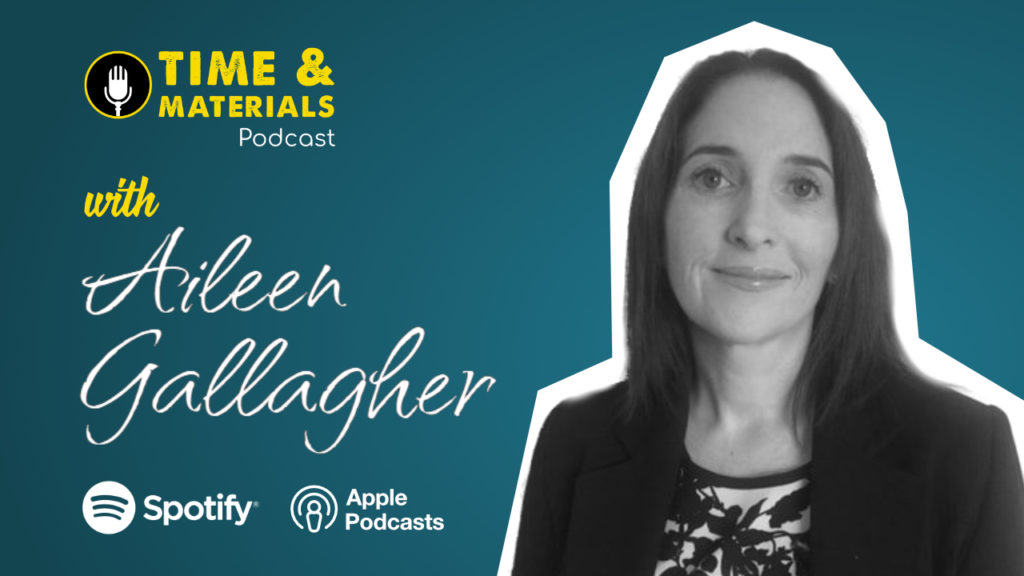Episode 63 – Aileen Gallagher
12 Steps To Easier Construction Projects
Aileen Gallagher specialises in working with Construction-related Businesses – Roofing, Construction, Commercial Landscaping, Heating & Plumbing, Electrical, Suspended Ceilings, Safety Netting etc. Any construction-related business selling high value services.
Aileen works in the short term on solving issues such as reducing working hours, attracting and retaining a skilled reliable team and improving cashflow in the business, and then moves onto the more long term issues of putting the systems and structures in place to ensure the business is less dependent on the constant involvement of the business owners.
Podcast Highlights
There are two types of construction business owners, which one are you?
Aileen Gallagher:
A list of what we call either KPIs or scorecard, where we say, but these are the 10 to 15 numbers in the business on a weekly basis that we can say, okay, this indicates how the business is performing. And we really, as a business owner, need to understand these numbers. And as well as that kind of the cash flow forecast, I’ve seen two extremes nearly with business owners that I’ve started to work with.
On the one hand, you have the business owners who basically run the business according to the bank account, if the bank account is okay and they’re able to pay everyone and there’s no phone calls and they’re able to meet wages and it seems to be going up steadily and it’s okay. They don’t even want to see it.
They will hand over everything to the accountant three months after the end of the year, they kind of literally come back and say that they meet with the accountant to look at the top figure, look at the bottom figure, and want to know, okay, how much tax do we need to pay this year? And that’s as much as it gets, that’s one extreme.
Ciaran Brennan:
You have no idea how uneasy that makes me feel. Because we deal with… we get to work on and it’s an absolute privilege because we get to work with a lot of construction companies. We only do that finance now, we’ve transitioned into that niche. It’s all we deal with is construction costs. But what we get to see is a company in Galway, a company in Cork, a company in Dublin, a company in Donegal has the same set of problems as the company that we deal with in Cape Town or Sydney or Auckland, wherever it might be.
And the one problem that I see that I get really uneasy is that problem there you’ve just talked about. Running businesses based on a bank account, like the fact that it’s not project-based for companies that do projects as a service is baffling to me, baffling to me. And I don’t know you can learn as a company.
How do we know what’s a good project? How do we know it’s a bad project? How do we know one project’s absolutely not hemorrhaging money and the next one is a great project that we should focus all our attention on. Because that’s underpinning the one or two that are bad performing. And we don’t know that.
Aileen Gallagher:
No. And some of the issues is that the business owners are so involved in the day-to-day running of the business and haven’t found the headspace or the time to actually set things up so they have the time to be able to look at these. If everything has gone right, and there’s no problems, they tend to kind of, and this is very successful businesses as well. It’s not businesses that are just barely getting by.
This is going to happen because even in the very successful businesses, the business owner’s still involved in a lot of the different functions. You’d have that extreme where there’s the running the business, according to the bank account. And then you have the other extreme where there might be somebody financial or they have somebody in the office either they have their own accountant or they have somebody looking at the whole invoices and they might be generating these kinds of management reports on a weekly and monthly basis.
But they’re not actually being used in order to make changes in the business. There’s just a stack of paperwork kind of happening. And you ask them about that and they’ll say, “Yeah, we have all our numbers.” But they’re not actually doing anything to make the difference. One of the things is that when you know the numbers if you’re getting these numbers three months after the end of the year, you can do absolutely nothing about it.
If you have these numbers on an ongoing basis, you can. And like the difference between when you can see the percentages, the difference 1% can make in, either a half a million turnover business or a 5 million turnover business. It actually adds and people are running around crazy and trying to get everything done and not really focusing on this part of it, which is, as you can see, it’s something and that’s why it’s there.
And that next step, because unless you kind of know, I feel like that absolutely there’s money being left on the table. There is a business that I was working with recently, very successful. And the issue that they brought with was their own time and their own productivity. They had a very high net profit and I didn’t really think that we could actually do a lot on that side of it.
But as we kind of went into it and delved a bit deeper, it was like one project was being really successful, but it was actually supporting other projects because the overall things look great. But when you dig deep and they can see then, and they were kind of aware, but didn’t know it, didn’t have the figures. I mean, if you don’t have the figures. You cannot make the changes.
Ciaran Brennan:
The data doesn’t lie. I mean, we could do a whole episode on that one.



